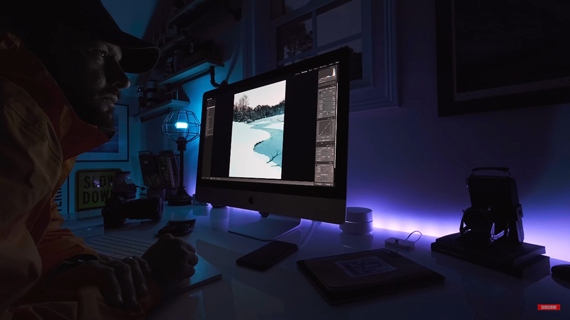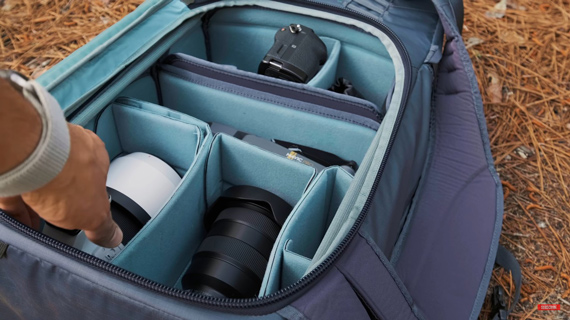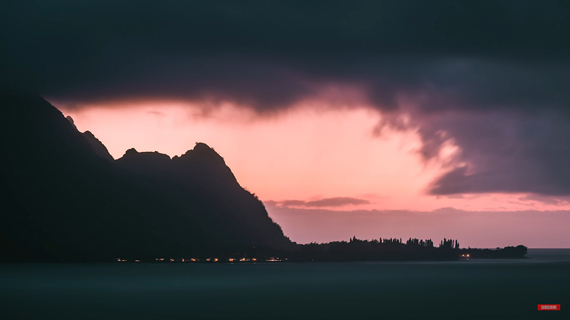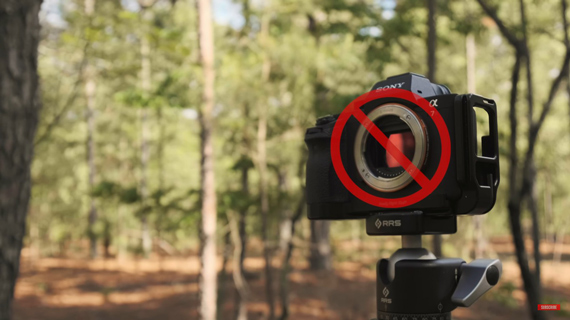Have you ever felt that no matter how hard you try, your photography simply doesn’t improve? You might be practicing something wrong without even realizing it. To help you overcome any bad habits you’ve developed as a landscape photographer, Mark Denney has put together this video highlighting his 9 worst habits:
Denney ranks his worst habits in landscape photography with #9 being the bad habit that negatively impacts him the least and bad habit #1 being the habit that’s negatively impacting him the most. Some of these are gear related, some are on-location issues, and others are post-processing related.
9. Quick Edits
Once you’re back from a trip, it’s a good idea to load the images to your computer and other external drives for backup. SD card failure can happen to anyone.
But, while you’re loading up your images, refrain from going through the images, rating them, and editing them. Instead, let your mind reset from the actual trip. Take a break and start editing them the next day with a fresh set of eyes. You’ll see things a little bit differently.
8. Single Lens Shooting
If you’re out to take landscape photos with multiple lenses in your bag, make sure to make the most of them. Spending most of your time with a single lens will mean you’ll get similar looking images that can turn out to be boring.
“I feel like I am not maximizing my time at a given location when I shoot with a single lens.”
It’s understandable that switching lenses multiple times isn’t always viable. However, try to get at least two varieties at a given location: one wide and the other tight, for instance.
7. Not Chimping Enough
“Chimping is the practice of holding the camera to your eye, taking a photo, then immediately looking down to the LCD screen to review the image that you just took.”
Chimping too much is definitely not a good habit. For genres of photography where events unfold very quickly, chimping can cause you to miss out on the decisive moments. Think of sports photography, wedding photography, and street photography. If you spend too much time looking at the screen, you’ll miss a lot of opportunities for great shots. But this isn’t equally true for landscape photography.
“I know light happens quick and moves quickly, and weather conditions change quickly, but generally speaking, things in landscape photography move a little bit slower.”
When chimping landscape photos, see if there are any unnecessary branches sticking out in the frame. See if the leaves of the trees appear blurry because of the wind and if you should be using a faster shutter speed. Pay attention to the minute details.
6. Avoiding “Bad” Weather
If you refer to the weather forecast and miss going to places because it says thunderstorms, then you’ll miss an opportunity to take the most dynamic of images. Instead of abandoning your plan, time your visit to just when the storm is approaching or leaving during sunset or sunrise. This way, you will witness moments that are very dramatic and moody. Almost anyone can go out and shoot to get good looking photos during good weather conditions. Make an effort to get out in challenging weather.
“A lot of us over the years of doing landscape photography have become kind of like a light snob to where you only want the perfect conditions and go out on sunrise and sunset.”
5. Lazy Lens Changing
When changing your lens, it’s risky business if you tend to leave your camera with the sensor exposed for a long time. Denney has the habit of taking the lens off the camera and leaving it exposed while he fiddles around his bag looking for the other lens to use. When doing so, the chances that dirt will enter the camera become very high.
The proper way to change your lens is to point your camera down to reduce the chance of dirt entering the camera. Then, swap the lenses quickly with the camera still facing down.
4. Sleeping In
Hitting the snooze button when the alarm rings may give you a couple more minutes of sleep, but light waits for no one. Furthermore, sleeping in will trigger a series of events that will cause you to rush to your location and take your photos in haste. In rare cases, you may still get the image, but in most cases, you’ll realize that you’ve missed out on the best light.
3. Pixel Peeping
If you find yourself zooming in all the way past 100 percent, almost looking at individual pixels, keep in mind that nobody will look at your images that way. It makes no sense at all.
“I’ve never seen anyone hold a print right up to their face. People don’t look at images like that. So, why am I pixel peeping the way that I am?”
2. Fixing It in Post
Don’t be lazy if you need to move your setup a bit off to the side or to a different location because something distracting is in the frame. Fixing in post may work out most of the time, but sometimes you’ll realize that the result isn’t clean, or the time and resources that you need to invest are simply not worth it.
1. Sensory Overload
When you reach a location that’s new to you, you get excited and anxious and all you want to do is find the perfect composition to take a photo.
“I end up just running all over the place just trying to come up with a composition quickly.”
Instead of rushing in, try walking around the location with just your camera or smartphone, scouting compositions. Slowing down will help you get better compositions and will also allow you to enjoy nature. And enjoying what you do is what really matters.
What other bad habits have you picked up as a landscape photographer?
Like This Article?
Don't Miss The Next One!
Join over 100,000 photographers of all experience levels who receive our free photography tips and articles to stay current:










Regarding lens changing:
I would like to see the actual sensor, hermetically sealed inside each lens. Let the camera body just be a grip, and view finder, or even a remote control. Then we could always get the perfect match between sensor and lens and it probably wouldn’t be any more expensive.